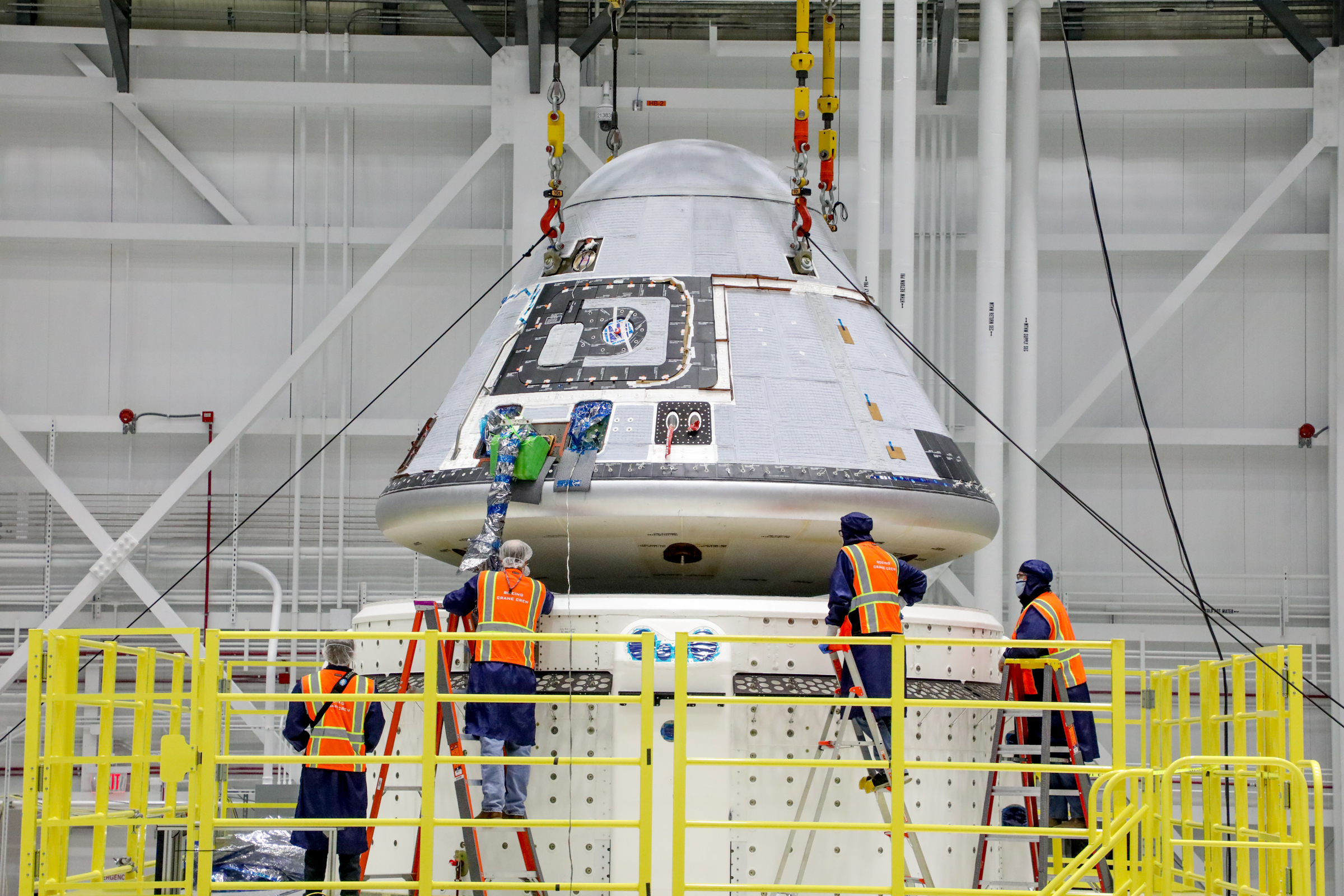Boeing's 2nd Starliner space taxi test flight for NASA delayed again

Boeing's second uncrewed test flight of its Starliner spacecraft for NASA will not launch on April 2 after all.
On Thursday (March 4), NASA and Boeing jointly announced plans to push back the launch of Starliner's Orbital Flight Test-2 mission from an early April liftoff. The flight's was already delayed by two weeks from a March 25 target due to winter storms in Houston and the need to replace some avionics boxes. It now appears that Starliner won't be able to make it to space until later in April.
"NASA also is weighing the volume of verification and validation analysis required prior to the test flight and the visiting vehicle schedule at the International Space Station," the joint statement read.
Related: Boeing's 1st Starliner flight test in photos
April is already a busy time at the orbiting complex, with both a Russian Soyuz crew launch and NASA's SpaceX Crew-2 astronaut mission. As things stand, there's no room for Boeing to reschedule from April 2 until "later in April," the statement added, but a new launch date hasn't been set yet.
OFT-2 will be a crucial milestone in the Starliner program as Boeing seeks to recover from a flawed mission in December 2019, which saw an uncrewed launch fail to reach its destination of the space station. NASA identified 80 items for correction before a new launch could take place, and Boeing spent several months addressing everything.
"The company has been conducting dry-runs ahead of an end-to-end mission rehearsal that will allow the operations team to practice," according to the NASA statement, adding that the team will also watch what happens during an entire simulated mission.
Breaking space news, the latest updates on rocket launches, skywatching events and more!
"Additionally, power-on testing and checkouts of the OFT-2 vehicle, with new avionics boxes installed, have been completed successfully," the update continued, adding that spacecraft fueling and "stacking" (or assembly with the rocket) is ready to start soon.
NASA plans to use the SpaceX Crew Dragon and the Boeing Starliner to fly most U.S. astronauts to the space station, largely replacing its reliance on the Russian Soyuz capsule that has carried everyone to space between 2011 and 2020, after the retirement of the space shuttle program. The new commercial crew spacecraft each hold four people, up from three seats in a Soyuz, allowing the station to pursue more science and commercial opportunities with future, larger crews.
Follow Elizabeth Howell on Twitter @howellspace. Follow us on Twitter @Spacedotcom and on Facebook.

Elizabeth Howell (she/her), Ph.D., was a staff writer in the spaceflight channel between 2022 and 2024 specializing in Canadian space news. She was contributing writer for Space.com for 10 years from 2012 to 2024. Elizabeth's reporting includes multiple exclusives with the White House, leading world coverage about a lost-and-found space tomato on the International Space Station, witnessing five human spaceflight launches on two continents, flying parabolic, working inside a spacesuit, and participating in a simulated Mars mission. Her latest book, "Why Am I Taller?" (ECW Press, 2022) is co-written with astronaut Dave Williams.
